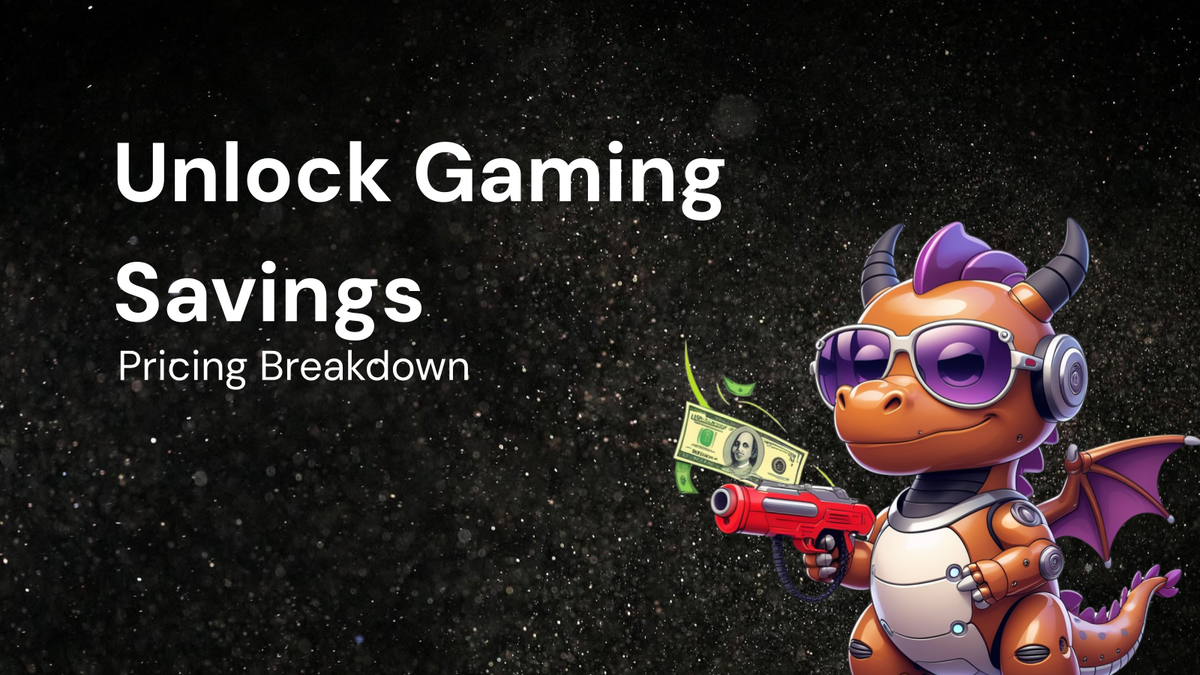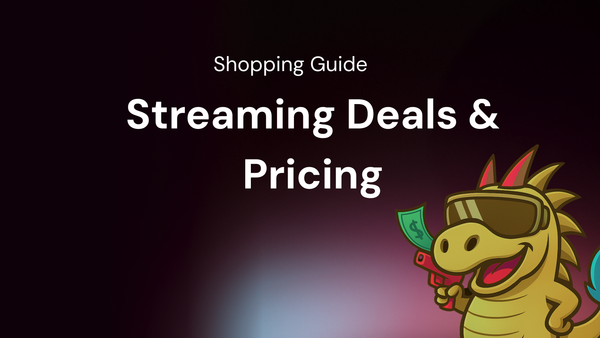Unlock Savings: Pricing Breakdown on gaming gear with shopping tips

Unlock Savings: A Deep Dive into Gaming Gear Pricing & Savvy Shopping Tips
For many, gaming is more than just a hobby; it's a passion, a community, and a way to unwind and connect. But building a top-tier gaming setup can quickly become an expensive endeavor. From powerful PCs and high-refresh-rate monitors to comfortable headsets and responsive peripherals, the costs can easily add up. However, with a little knowledge and strategic planning, you can unlock significant savings and build your dream gaming rig without breaking the bank.
This comprehensive guide breaks down the pricing of essential gaming gear, explores the factors that influence those prices, and provides actionable shopping tips to help you maximize your budget and score the best deals.
I. Understanding the Landscape: A Price Breakdown of Essential Gaming Gear
Let's take a look at the typical price ranges for key components and accessories in a gaming setup:
A. Gaming PC (Desktop): The Heart of the Operation
- Budget Build (Entry-Level Gaming): $500 - $800.
- Components: A basic CPU (e.g., AMD Ryzen 5 5600G or Intel Core i3-12100F), integrated graphics (or a low-end dedicated GPU like the AMD Radeon RX 6400 or NVIDIA GeForce GTX 1650), 8-16GB of RAM, a 500GB-1TB SSD, a basic motherboard, a budget-friendly case, and a power supply unit (PSU).
- Performance: Suitable for playing older games at medium settings or newer games at low settings, typically at 1080p resolution.
- Mid-Range Build (1080p/1440p Gaming): $800 - $1500.
- Components: A more powerful CPU (e.g., AMD Ryzen 5 7600X or Intel Core i5-13600K), a dedicated GPU (e.g., AMD Radeon RX 6700 XT or NVIDIA GeForce RTX 3060/4060), 16GB of RAM, a 1TB SSD (or a combination of SSD and HDD), a mid-range motherboard, a case with good airflow, and a reliable PSU.
- Performance: Can handle most modern games at high settings at 1080p or medium settings at 1440p. Offers a smoother and more immersive gaming experience.
- High-End Build (1440p/4K Gaming): $1500 - $3000+.
- Components: A top-tier CPU (e.g., AMD Ryzen 9 7900X or Intel Core i7/i9-13700K/13900K), a high-end GPU (e.g., AMD Radeon RX 7900 XT/XTX or NVIDIA GeForce RTX 4070 Ti/4080/4090), 32GB+ of RAM, a fast NVMe SSD (1TB or larger), a high-end motherboard with robust features, a premium case with excellent cooling, and a high-wattage PSU.
- Performance: Designed to run the latest games at maximum settings at 1440p or 4K resolution with high frame rates and stunning visuals. Supports advanced features like ray tracing.
B. Gaming Laptop: Portable Powerhouse
- Budget Gaming Laptop: $600 - $1000.
- Specs: Typically features an Intel Core i5 or AMD Ryzen 5 processor, a dedicated GPU like an NVIDIA GeForce GTX 1650 or RTX 3050 (mobile), 8-16GB of RAM, and a 256GB-512GB SSD.
- Performance: Capable of playing less demanding games or older titles at reasonable settings.
- Mid-Range Gaming Laptop: $1000 - $1800.
- Specs: Offers a more powerful Intel Core i7 or AMD Ryzen 7 processor, an NVIDIA GeForce RTX 3060/4050 or AMD Radeon RX 6600M, 16GB of RAM, and a 512GB-1TB SSD.
- Performance: Can handle most modern games at high settings at 1080p or medium settings at 1440p.
- High-End Gaming Laptop: $1800+.
- Specs: Boasts a top-tier Intel Core i9 or AMD Ryzen 9 processor, an NVIDIA GeForce RTX 3070/3080/4070/4080/4090 (mobile) or AMD Radeon RX 6800M/6850M/6900M XT, 16-32GB+ of RAM, and a 1TB+ NVMe SSD. Often includes high-refresh-rate displays.
- Performance: Delivers desktop-level gaming performance in a portable package. Can run the latest games at maximum settings.
C. Gaming Monitor: Visual Fidelity
- Budget Monitor (1080p, 60-75Hz): $100 - $200.
- Mid-Range Monitor (1080p 144Hz or 1440p 60-75Hz): $200 - $400.
- High-End Monitor (1440p 144Hz/165Hz/240Hz or 4K 60Hz/144Hz): $400 - $1000+.
- Features: Consider panel type (TN, VA, IPS), response time, refresh rate, resolution, and adaptive sync technology (G-Sync or FreeSync).
D. Gaming Keyboard: Precision and Responsiveness
- Budget Keyboard (Membrane): $20 - $50.
- Mid-Range Keyboard (Mechanical, Basic Features): $50 - $100.
- High-End Keyboard (Mechanical, Advanced Features): $100 - $250+.
- Features: Mechanical switches, RGB lighting, programmable keys, macro support, and dedicated media controls.
E. Gaming Mouse: Accuracy and Comfort
- Budget Mouse (Basic Optical): $10 - $30.
- Mid-Range Mouse (Gaming Optical/Laser, Programmable Buttons): $30 - $70.
- High-End Mouse (Gaming Optical/Laser, Advanced Features): $70 - $150+.
- Features: High DPI, adjustable weight, customizable buttons, ergonomic design, and wired/wireless connectivity.
F. Gaming Headset: Immersive Audio
- Budget Headset (Basic Stereo): $20 - $50.
- Mid-Range Headset (Stereo/Surround Sound, Decent Microphone): $50 - $100.
- High-End Headset (Surround Sound, High-Quality Microphone, Comfortable Design): $100 - $300+.
- Features: Surround sound (virtual or physical), comfortable earcups, a clear microphone, wireless connectivity, and noise cancellation.
G. Other Accessories:
- Gaming Chair: $100 - $500+ (Ergonomics and comfort are key).
- Gaming Mousepad: $10 - $50 (Size and surface material matter).
- Game Controllers: $30 - $70 (Essential for many games).
- Streaming Equipment (Microphone, Webcam, Capture Card): $50 - $500+ (If you plan on streaming or creating content).
II. Decoding the Price Tag: Factors Influencing Gaming Gear Costs
Several factors contribute to the price of gaming gear. Understanding these elements will empower you to make informed purchasing decisions:
- Performance and Specifications: Higher performance components, such as faster CPUs, more powerful GPUs, and higher refresh rate monitors, command higher prices. More RAM, larger storage capacities, and advanced features also increase costs.
- Brand Reputation: Established brands with a proven track record of quality and reliability often charge a premium. They invest in research and development, design, and quality control.
- Materials and Construction: The quality of materials used in construction significantly impacts the price. Durable materials like aluminum, premium plastics, and high-quality switches contribute to a longer lifespan and a more premium feel.
- Features and Technology: Advanced features like RGB lighting, programmable buttons, customizable settings, wireless connectivity, and specialized technologies (e.g., G-Sync, FreeSync, ray tracing) add to the cost.
- Market Demand: High demand for specific components or products can drive prices up, especially when supply is limited (as seen during the GPU shortage in recent years).
- Availability and Distribution: Products that are difficult to find or are only available from specific retailers may command higher prices.
- Marketing and Branding: Companies invest heavily in marketing and branding, which can contribute to the overall price of their products.
- Warranty and Support: Products with longer warranties and better customer support may be more expensive initially, but they can save you money in the long run if something goes wrong.
- Location and Taxes: Prices can vary depending on your location and the applicable taxes.
III. Unlock Savings: Smart Shopping Strategies for Gamers
Now that you understand the pricing landscape and the factors that influence it, let's explore practical strategies to save money on gaming gear:
A. Planning and Budgeting:
- Define Your Needs: Before you start shopping, determine what you need and what you want. What games do you plan to play? What resolution and frame rate are you aiming for? What features are essential to you?
- Set a Realistic Budget: Based on your needs and wants, set a realistic budget and stick to it. Don't get caught up in the hype and overspend on features you don't need.
- Prioritize Components: Prioritize the most important components for your gaming experience. For example, if you're primarily concerned with graphics, focus on getting a good GPU.
- Research and Compare Prices: Thoroughly research different brands, models, and retailers to compare prices and find the best deals.
B. Timing is Everything: When to Buy
- Holiday Sales: Black Friday, Cyber Monday, Christmas, and other major holidays are prime times for finding deals on gaming gear.
- Seasonal Sales: Retailers often offer sales during specific seasons, such as back-to-school sales or end-of-summer sales.
- Product Launches: When new products are released, older models often go on sale to clear inventory.
- Keep an Eye on Price Tracking Websites and Tools: Use websites like CamelCamelCamel, PriceRunner, or PCPartPicker to track prices and identify deals. Set price alerts to be notified when prices drop.
C. Exploring Shopping Options:
- Online Retailers: Amazon, Newegg, Best Buy, and other online retailers offer a wide selection of gaming gear and competitive prices.
- Local Computer Stores: Support your local businesses and check their prices. They may offer personalized advice and services.
- Manufacturer Websites: Some manufacturers offer direct sales on their websites, which may include exclusive deals or discounts.
- Used Marketplaces: Consider buying used or refurbished gaming gear from reputable sellers on eBay, Craigslist, or Facebook Marketplace. This can save you significant money, but be sure to inspect the items carefully and check the seller's reputation.
- Refurbished Products: Many retailers and manufacturers sell refurbished products at discounted prices. These products have been inspected, repaired, and tested to ensure they are in good working condition.
D. Maximizing Savings:
- Look for Bundles and Combos: Retailers often offer bundles and combos that include multiple components or accessories at a discounted price.
- Use Coupons and Promo Codes: Search for coupons and promo codes before making a purchase. Websites like RetailMeNot and Honey can help you find discounts.
- Sign Up for Email Newsletters: Subscribe to email newsletters from your favorite retailers and manufacturers to receive exclusive deals and promotions.
- Take Advantage of Price Matching Policies: Some retailers offer price matching policies, which means they will match the price of a competitor.
- Consider Open-Box Items: Open-box items are products that have been returned by other customers. They are typically in excellent condition and are sold at a discounted price.
- Build Your Own PC: Building your own PC can often be cheaper than buying a pre-built system, and it allows you to customize the components to your specific needs and budget.
- Buy in Bulk (If Applicable): If you need multiple items, such as multiple sticks of RAM, buying in bulk can sometimes save you money.
- Check for Student or Military Discounts: Many retailers offer discounts to students and military personnel.
E. Don't Sacrifice Quality for Price:
- Read Reviews: Before making a purchase, read reviews from other customers to get an idea of the product's quality and performance.
- Choose Reputable Brands: Stick to reputable brands with a history of producing high-quality gaming gear.
- Consider the Long-Term Cost: Don't just focus on the initial price. Consider the long-term cost of ownership, including potential repairs and replacements. A slightly more expensive, but higher-quality product, can save you money in the long run.
IV. Conclusion: Game On, Smartly!
Building a gaming setup can be a significant investment, but it doesn't have to break the bank. By understanding the pricing factors, following smart shopping strategies, and prioritizing your needs, you can unlock significant savings and create the gaming rig of your dreams without emptying your wallet. Remember to plan your budget, research thoroughly, compare prices, and take advantage of discounts and deals. With a little effort and strategic thinking, you can game on in style, without compromising your financial well-being. Happy gaming!




